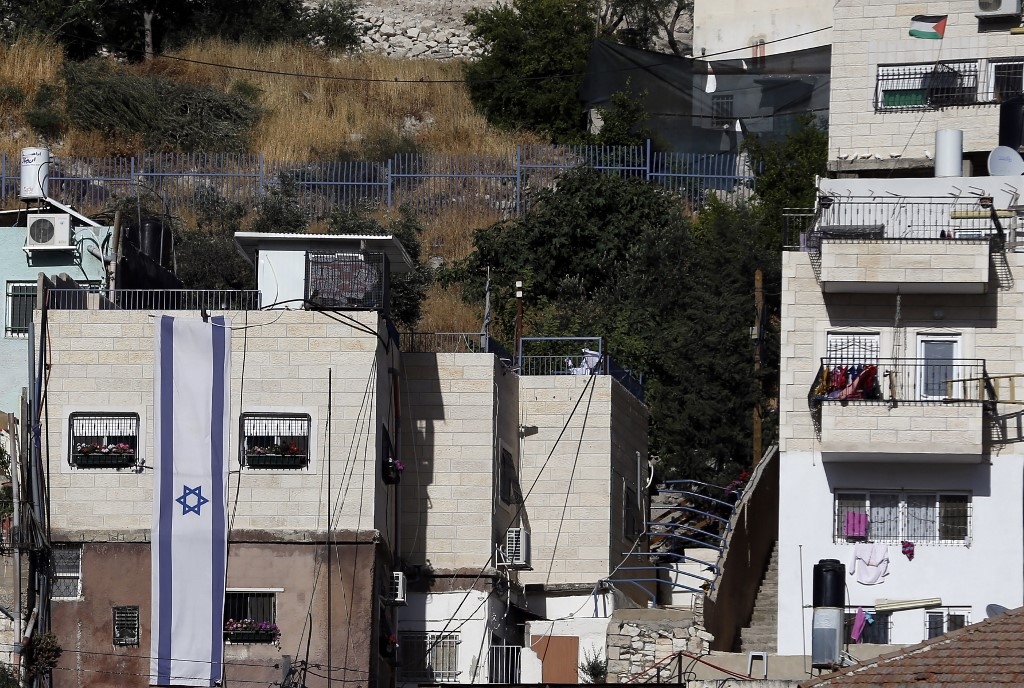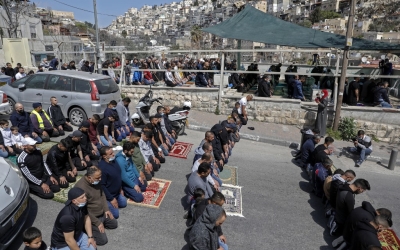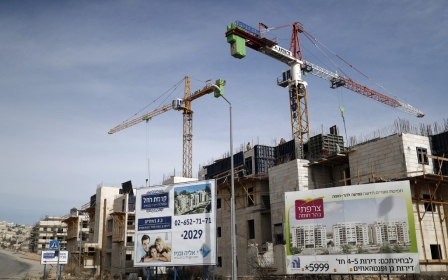Israeli settlers take control of Palestinian property and land in East Jerusalem

More than 100 Israeli settlers took over Palestinian properties and land in the occupied East Jerusalem neighbourhood of Silwan on Thursday morning, according to the Wafa news agency.
Accompanied by Israeli police and private security guards, the group arrived at 2am in Silwan, an area on the outskirts of the contested city, and moved into three buildings and a plot of land owned by Palestinian residents.
Since 2007, the area of Silwan has been a site of excavation for Israeli archaeologists hoping to find the biblical city of David.
Wadi al-Hilweh Information Centre, which monitors Israeli violations and settler archaeological excavations in the area, said in a statement that the owners of the buildings were not present when the settlers and police arrived.
Ateret Cohanim, a settler group active in Silwan, al-Bustan, Batn al-Hawa and Wadi al-Hilweh, all neighbourhoods south of Al-Aqsa mosque, now has control of the four-storey buildings and the plot, according to Wadi al-Hilweh.
New MEE newsletter: Jerusalem Dispatch
Sign up to get the latest insights and analysis on Israel-Palestine, alongside Turkey Unpacked and other MEE newsletters
Two of the buildings belonged to the Awad family, who still live nearby and say they sold them to two Palestinian men four months ago.
The family said that they were surprised to learn that the properties had been sold secretly to Israel settlers, adding that one of the terms of the sale agreement to the two men was “to consult the Awad family about any future sale and to not sell it to Jews."
The third residential building, also four storeys, and with a basement, belonged to a man who was not in the area when settlers arrived in the early hours of Thursday morning.
The plot of land was owned by the Abu Sbieh family, who said that it was sold to another man, according to Wadi al-Hilweh.
Israeli settlers on Thursday installed two rooms and a staircase on the plot of land, opened a new entrance to one of the buildings and raised Israeli flags on it, installing CCTV cameras in the area.
Biblical tourism
Currently, 400 Israeli settlers live in roughly 12 areas - protected by the Israeli army and military police - among the 55,000 or so Palestinians of Silwan, al-Bustan, Batn al-Hawa and Wadi al-Hilweh.
In March, hundreds of Palestinians in East Jerusalem protested an Israeli municipality plan to demolish 100 properties in order to make way for a “biblical” tourism park in the al-Bustan area.
The municipality is moving ahead with its plan to build Gan Hamelech Park on al-Bustan's land and link it to the City of David archeological park. This will require the demolition of 100 properties, home to almost 1,550 Palestinians, 63 percent of them under 18 years of age.
Israeli authorities also announced in November that they were starting excavation work in the Silwan area to prepare for the construction of a cable car, a controversial project that would dramatically alter the historic Old City of Jerusalem and expand the Israeli presence in Palestinian-majority neighbourhoods.
Israeli demolitions of Palestinian houses in al-Bustan have been justified on the grounds of residents not having a building permit. However, Israel makes it virtually impossible for Palestinians to get those permits, while the Israeli government announces and expands settlements in East Jerusalem and the occupied West Bank regularly.
Middle East Eye delivers independent and unrivalled coverage and analysis of the Middle East, North Africa and beyond. To learn more about republishing this content and the associated fees, please fill out this form. More about MEE can be found here.





